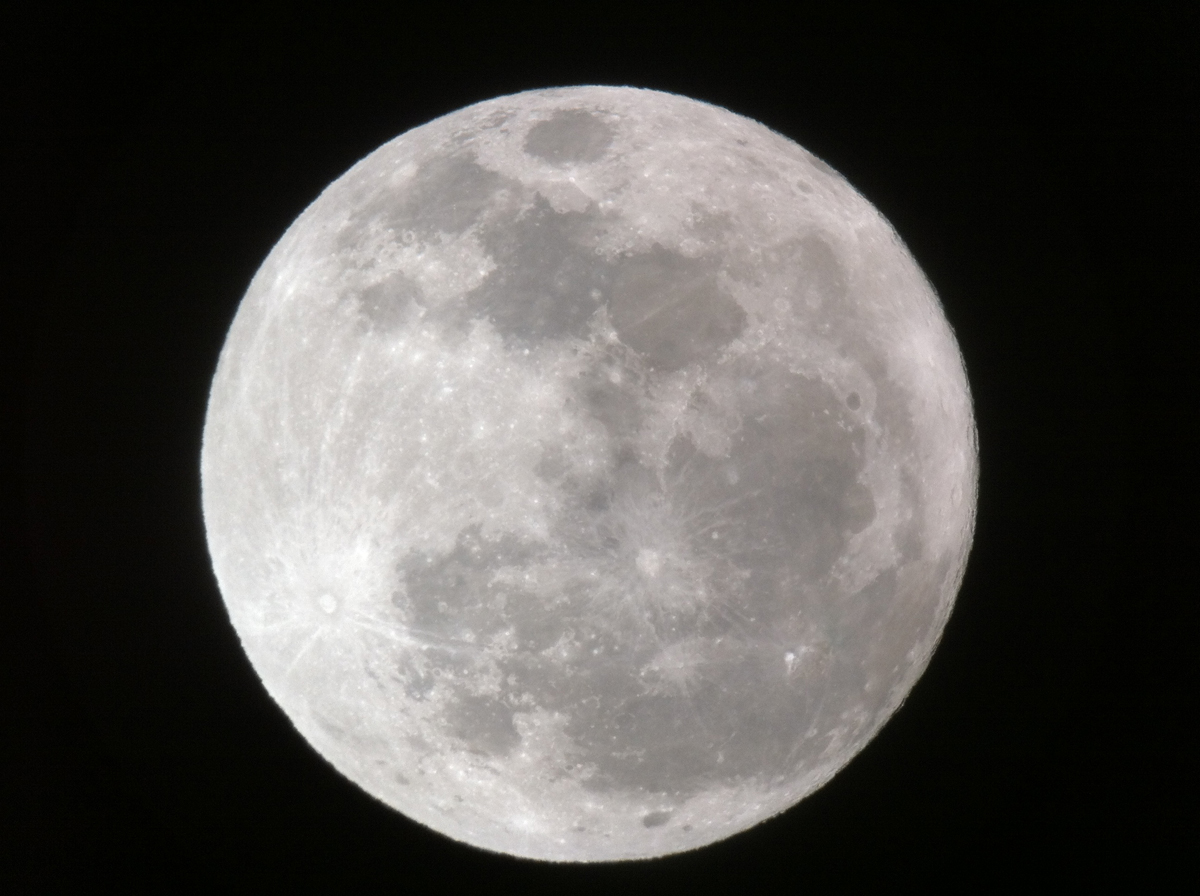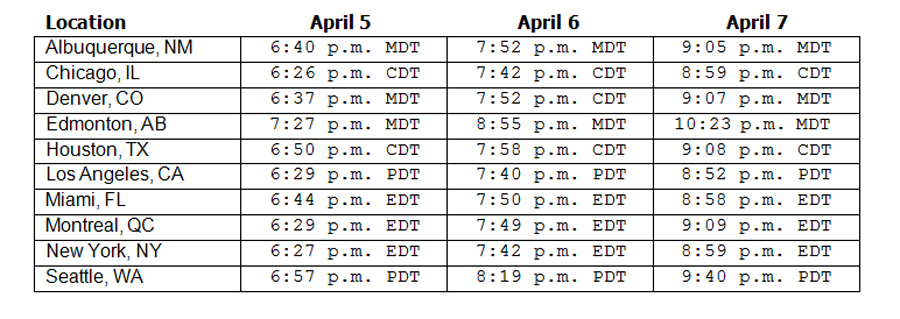
Friday (April 6) brings us the first full moon of the new spring season.
The official moment that the moon turns full is 19:19 UT, or 3:19 p.m. EDT.
Traditionally, the April full moon is known as "the Pink Moon," supposedly as a tribute to the grass pink or wild ground phlox, considered one of the earliest widespread flowers of the spring. Other monikers include the Full Sprouting Grass Moon, the Egg Moon and, among coastal Native American tribes, the Full Fish Moon, for when the shad came upstream to spawn.
(Traditional names for the full moons of the year are found in some publications, such as the Farmers' Almanac. We also published the complete list of full moon names here on SPACE.com. The origins of these names have been traced back to Native America, though they may also have evolved from old England or, as Guy Ottewell, editor of the annual publication Astronomical Calendar, suggests, "writer's fancy.")
The first full moon of spring is usually designated as the Paschal Full Moon or the Paschal Term. Traditionally, Easter is observed on the Sunday after the Paschal Full Moon. If the Paschal Moon occurs on a Sunday, Easter is the following Sunday. [Photos: Full Moon Captivates Skywatchers in February 2012]
Following these rules, we find that the date of Easter can fall as early as March 22 and as late as April 25. Pope Gregory XIII decreed this in 1582 as part of the Gregorian calendar. So according to the current ecclesiastical rules, Easter Sunday in 2012 is to be celebrated April 8.
Interestingly, these rules also state that the vernal equinox is fixed on March 21, despite the fact that from the years 2008 through 2101, at European longitudes it actually will occur no later than March 20.
Get the Space.com Newsletter
Breaking space news, the latest updates on rocket launches, skywatching events and more!
Adding additional confusion is that there is also an "ecclesiastical" full moon, determined from ecclesiastical tables, whose date does not necessarily coincide with the "astronomical" full moon, which is based solely on astronomical calculations. In 1981, for example, the full moon occurred on Sunday, April 19, so Easter should have occurred on the following Sunday, April 26. But based on the ecclesiastical full moon, it occurred on the same day of the astronomical full moon, April 19!
Hence, there can sometimes be discrepancies between the ecclesiastical and astronomical versions for dating Easter. In the year 2038, for instance, the equinox will fall on March 20, with a full moon the next day, so astronomically speaking, Easter should fall on March 28 of that year. In reality, however, as mandated by the rules of the church, Easter 2038 will be observed as late as it can possibly come, on April 25.
So in practice, the date of Easter is determined not from astronomical computations but rather from other formulae such as Golden Numbers.
Since the beginning of the 20th century, a proposal to change Easter to a fixed holiday rather than a movable one has been widely circulated, and in 1963 the Second Vatican Council said it would agree, provided a consensus could be reached among Christian churches. The second Sunday in April has been suggested as the most likely date. That, incidentally, works outs rather nicely this year.
Harvest moon effect, in reverse
The full moon occurring nearest to the autumnal equinox is traditionally called the Harvest Moon. What sets the Harvest Moon apart from the others is that instead of rising at its normal average of 50 minutes later each day, it seems to rise at nearly the same time for several nights.
In direct contrast to the Harvest Full Moon, the Paschal Full Moon appears to rise considerably later each night. Below we've provided some examples for 10 North American cities.

Although normally the moon rises about 50 minutes later each night, over this three-night interval for our relatively small sampling we can see that the rising of the moon comes, on the average, just over 76 minutes later each night. A quick study of the table shows that the night-to-night difference is greatest for the more northerly locations. (Edmonton, located at latitude 53.6ºN, sees moonrise come an average of 88minutes later.) Meanwhile, the difference is less at southerly locations. (In Miami, located at latitude 26ºN, the average difference is about 67 minutes.)
The reason for this seasonal circumstance is that the moon appears to move along the ecliptic (the path the sun takes across the sky), and at this time of year when rising, the ecliptic makes its largest angle with respect to the horizon for those living in the Northern Hemisphere.
In contrast, for those living in the Southern Hemisphere, the ecliptic at this time of year appears to stand at a more oblique angle to the eastern horizon. As such, the difference for the time of moonrise is noticeably less than the average of 50 minutes per night. In Sydney, Australia, for instance, the night-to-night difference amounts to just 40 minutes.
Editor's note: If you have an amazing skywatching photo you'd like to share for a possible story or image gallery, please contact managing editor Tariq Malik at tmalik@space.com.
Joe Rao serves as an instructor and guest lecturer at New York's Hayden Planetarium. He writes about astronomy for The New York Times and other publications, and he is also an on-camera meteorologist for News 12 Westchester, N.Y.
Join our Space Forums to keep talking space on the latest missions, night sky and more! And if you have a news tip, correction or comment, let us know at: community@space.com.

Joe Rao is Space.com's skywatching columnist, as well as a veteran meteorologist and eclipse chaser who also serves as an instructor and guest lecturer at New York's Hayden Planetarium. He writes about astronomy for Natural History magazine, Sky & Telescope and other publications. Joe is an 8-time Emmy-nominated meteorologist who served the Putnam Valley region of New York for over 21 years. You can find him on Twitter and YouTube tracking lunar and solar eclipses, meteor showers and more. To find out Joe's latest project, visit him on Twitter.









